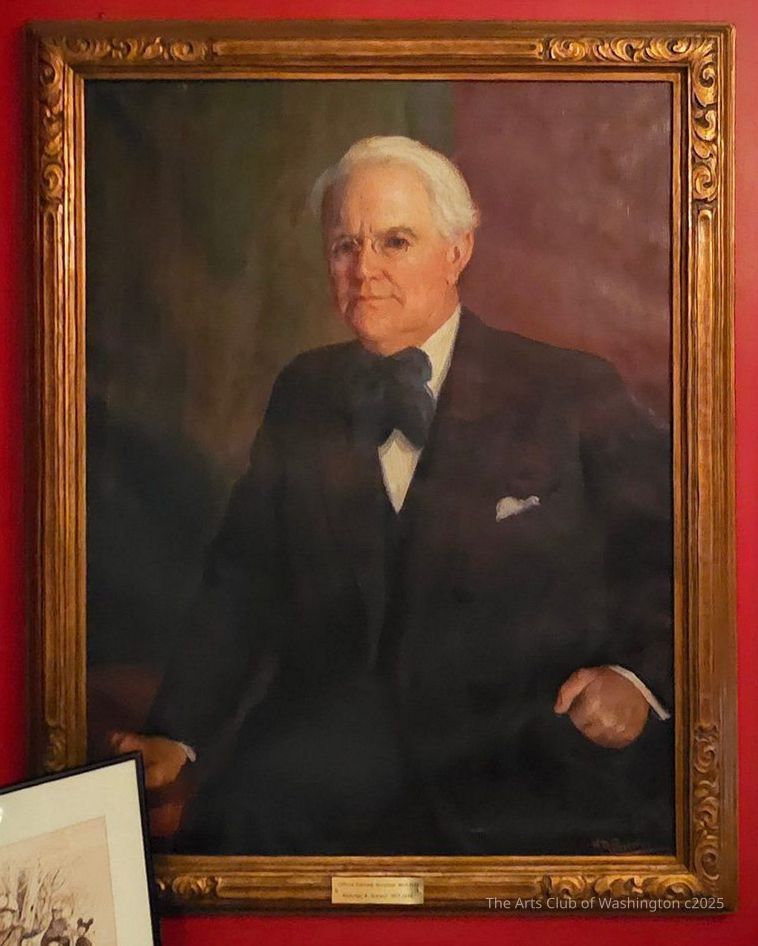Note Type
Historical Background and OverviewNote
Born in Kentucky, Clifford Berryman (1869-1949) moved to Washington, D.C., in 1886 after being appointed draftsman to the United States Patent Office. Here, he began submitting sketches to the Washington Post, which got him enough attention in 1891 to be made an understudy for their political cartoonist, whose post Berryman took over in 1896. His 1902 cartoon showing President Theodore Roosevelt refusing to shoot a bear cub during a hunting trip in Mississippi inspired the toymaker Morris Michtom to create the “Teddy Bear” doll. Later, Berryman worked for the Washington Evening Star newspaper from 1907 to 1949, winning the Pulitzer Prize for Editorial Cartooning in 1944. As a member of The Arts Club of Washington, his skills as a caricaturist came in handy as he did caricatures of early Club presidents from Henry Kirke Bush-Brown to Lewis Moneyway
Minnesota-born, Nicholas Richard Brewer (1857-1949) began painting at a young age. He was initially self-taught but began serious study in St. Paul. He married his teacher’s daughter, Rose Mary Koempel, and moved with her to New York City, where he studied under Dwight Tryon and Charles Flagg. Brewer became a prolific landscape and portrait artist. After a long career which took him all over the United States, including Washington, D.C., he eventually returned to St. Paul, where he retired. His autobiography, "Trails of a Paintbrush," tells his story in great detail and was positively reviewed as a unique story of Americana.
His painting of Clifford Berryman is painted with vibrant colors and depicts Berryman in front of an unusual two-tone background, nonchalantly half-leaning-half-sitting on a table.
